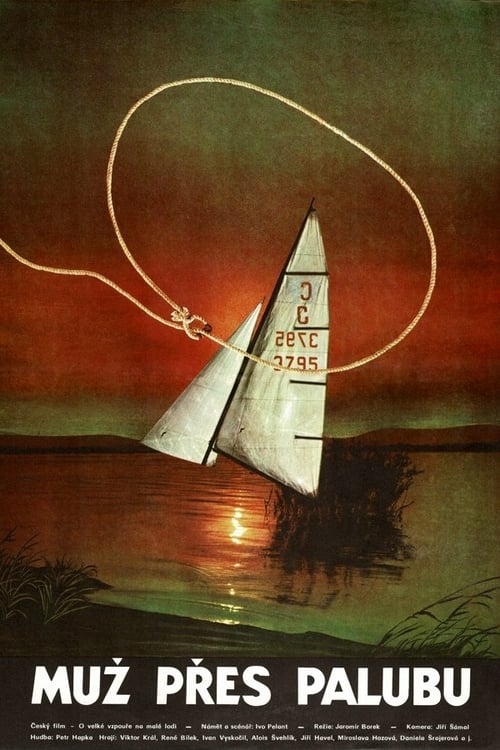
Ask Your Own Question
What is the plot?
Complete Plot Narrative: Adventures of Robinson Crusoe, a Sailor from York (1982)
The film opens with the striking imagery of York, England, where we first encounter Robinson Crusoe as a restless young man consumed by wanderlust and dreams of fortune. The animation captures the gray stone buildings and bustling harbor of his hometown with meticulous detail, establishing the contrast between the ordered, civilized world he knows and the untamed adventures that call to him. Crusoe stands at the threshold of his life, torn between the expectations of his family and the irresistible pull of the sea. His early scenes reveal a man driven by ambition and a hunger for experience, someone who cannot remain content within the confines of York's familiar streets. The film employs delicate irony in its narration, suggesting even at this early stage that Crusoe's desires for wealth and adventure will lead him down an unexpected path that will fundamentally transform who he is.
With his mind made up, Crusoe boards a merchant vessel, leaving behind everything he knows. The ship itself becomes a character in the narrative--a wooden vessel cutting through the ocean, representing both his gateway to fortune and his passage toward an unforeseen destiny. The animation captures the majesty and terror of the sea with equal measure, showing the endless horizon, the rhythmic motion of the waves, and the vulnerability of human ambition against nature's immensity. Crusoe works aboard the ship, experiencing the camaraderie and hardship of seafaring life. His shipmates represent the world he came from, grounded in commerce and conventional success. Yet even among them, Crusoe feels the pull of something greater, something beyond the predictable routes of merchant trading.
Then comes the catastrophe that will define his entire existence. A violent storm descends upon the vessel with terrifying force. The animation renders the shipwreck with stunning realism--the sky darkens to an almost supernatural black, waves tower like mountains, and the ship splinters under the relentless assault of the sea. Crusoe fights desperately to survive as the vessel breaks apart around him, the wooden planks becoming instruments of destruction. In a moment of desperate struggle, he manages to cling to debris and is swept toward an island. The journey through the churning water is rendered as a nightmarish passage between life and death, with Crusoe barely conscious as he washes ashore on a beach of golden sand. When he finally collapses on the shore, gasping for breath, he has no way of knowing that this moment marks the beginning of twenty-eight years of isolation.
Crusoe awakens on the deserted island, initially disoriented and traumatized by his ordeal. The island reveals itself gradually--a place of extraordinary natural beauty and hidden dangers. The animation showcases the flora and fauna with masterful execution, depicting dense forests, exotic vegetation, and wildlife that Crusoe has never encountered before. As he explores, he discovers that he is not entirely alone. A dog, apparently abandoned or escaped from some previous settlement, becomes his first companion. The animal, initially wary, gradually accepts Crusoe's presence, and their bond becomes one of mutual survival. Later, Crusoe discovers a parrot--a talking bird that becomes his voice in the silence, a companion that can echo his words back to him and provide the illusion of conversation. He also finds or tames a goat, creating a small domestic circle of animals that help him maintain his sanity in the face of overwhelming solitude.
The early days on the island are consumed with the basic necessities of survival. Crusoe constructs a shelter, using the remnants of the shipwreck and materials from the island itself. He builds a home that is part fortress, part refuge--a physical manifestation of his determination to survive. He learns to find food, to hunt, to cultivate what he can. The film depicts these activities with a kind of meditative quality, showing the repetitive, almost ritualistic nature of survival. Days blur into weeks, weeks into months, and months into years. The animation captures the passage of time through subtle changes in Crusoe's appearance, the growth of his beard, the weathering of his skin, the deepening lines of his face. His dog and parrot age alongside him, becoming fixtures of his existence. The goat provides milk and companionship. These animals are not mere pets--they are lifelines to sanity, reminders that he is still human, still capable of connection and care.
But the island harbors darker secrets. In his twenty-fifth year of isolation, Crusoe discovers a desolate beach on the far side of the island, a place he had not ventured to before. What he witnesses there shatters the fragile peace he has constructed. Carib cannibals arrive in their canoes, bringing captives whom they intend to kill and consume in ritualistic ceremonies. The animation does not shy away from depicting the horror of this discovery--the indigenous dance in the rite of cannibalism is rendered with unflinching realism, capturing both the cultural significance of the ritual and its brutality from Crusoe's perspective. The scene is truly unforgettable, a moment where the island's beauty transforms into something primal and terrifying. Crusoe watches from hiding, his heart pounding, as the cannibals prepare their victims. He is forced to confront not only the reality of his isolation but also the existence of other humans on his island--humans whose practices he finds abhorrent.
Crusoe's moral awakening comes swiftly. He cannot remain a passive observer to human slaughter. One of the captives, a young man, manages to escape his captors and flees across the beach. The cannibals pursue him, and Crusoe makes a decision that will alter the course of his remaining years on the island. He ambushes the two pursuers, engaging them in combat. The exact details of their deaths are not fully specified, but the result is clear--the pursuers are killed or forced to retreat, and the others in the canoes, unaware of what has happened to their companions, abandon the beach and paddle away into the ocean. Crusoe has become a savior, a rescuer, and in doing so, he has fundamentally changed his circumstances.
The escaped captive, trembling and grateful, bows before Crusoe in an expression of profound gratitude. Crusoe decides to employ him as a servant, though this relationship will evolve into something far more meaningful. He names the man Friday, after the day of the week on which their rescue takes place. The name is both practical and symbolic--a marker of time, a reminder of the specific moment when Crusoe's solitude ended and his life gained new purpose.
Crusoe begins the painstaking process of teaching Friday the English language. This is not a simple task of vocabulary and grammar but a profound act of cultural transmission and connection. Through language, Crusoe shares his world with Friday, explaining concepts, ideas, and values that are foreign to the young man. He teaches Friday about Christianity, about morality, about the wrongness of cannibalism. The film depicts these lessons with sensitivity and nuance, showing both Crusoe's determination to convert Friday to his way of thinking and Friday's gradual understanding and acceptance of these new perspectives. The relationship between them transforms from master and servant into something approaching friendship and equality--a notable deviation from the original novel that emphasizes the humanity and mutual respect between the two men.
The bond between Crusoe and Friday deepens through shared experiences and mutual dependence. They work together to survive, to build, to defend their territory. When Crusoe learns that Friday's father is among the captives held by the cannibals, he and Friday plan a daring rescue. Together, they ambush the cannibals in a coordinated attack, using strategy and courage to overcome their enemies. Friday's father is saved, along with other captives, and the threat of the cannibals is neutralized. This confrontation represents the climax of their time on the island--not a final, apocalyptic battle but a decisive action that frees them from the shadow of the cannibals and allows them to reclaim their island as a place of safety rather than danger.
With the immediate threat eliminated, Crusoe and Friday begin to contemplate their future. They have survived together, built a life together, and now they face the possibility of return. The film does not depict a sudden rescue or a convenient ship arriving to save them. Instead, it shows a deliberate choice--Crusoe and Friday decide to leave the island and return to civilization. The journey back to England is rendered as a passage through time and space, a movement from the island's timeless isolation back into the world of history and society. After twenty-eight years on the island, Crusoe returns to England, and Friday accompanies him, his companion in this new chapter of life.
The final scenes of the film emphasize the emotional and psychological resolution rather than dramatic action. Crusoe and Friday arrive in England, a place that is both familiar and foreign to Crusoe after nearly three decades away. The contrast between the man who left York as a young, ambitious dreamer and the man who returns--weathered, changed, transformed by his experiences--is profound. His family may or may not recognize him; society may or may not have a place for him. But what matters is that Crusoe has been fundamentally altered by his time on the island. His earlier ambitions for wealth and fortune have been replaced by a deeper understanding of human connection, survival, and the value of friendship.
Friday, too, has been transformed. He has learned a new language, adopted a new religion, and integrated into Crusoe's world while maintaining his own identity and dignity. The film suggests that their relationship, forged in the crucible of isolation and survival, transcends the master-servant dynamic that initially defined it. They are companions, friends, brothers in experience.
The film closes on a reflective note, with the animation capturing the quiet moments of their new life in England. The bustling streets of civilization seem almost as alien as the island once was. Crusoe and Friday navigate this new world together, carrying with them the lessons and bonds formed during their years away. The final image is one of contemplation rather than triumph--Crusoe looking out at the English landscape, perhaps remembering the island, perhaps contemplating the journey that has brought him to this moment. The film does not offer easy answers or neat resolutions but instead presents a meditation on how experience, isolation, and human connection can transform a person's understanding of what truly matters in life.
The stop-motion animation throughout the film is rendered with extraordinary attention to detail. The flora and fauna of the island are masterfully executed, from the smallest insects to the largest trees. The characterization of the characters--Crusoe's dog, the parrot, the goat, and eventually Friday--is exemplary, with each animal and person given distinct personality and presence. The shipwreck sequence is truly unforgettable, as is the rainy season depicted with all its atmospheric power. The indigenous dance in the rite of cannibalism, while disturbing, is rendered with cultural sensitivity and artistic integrity. For almost the entire duration of the film, viewers forget they are watching an animated production; the realism and emotional depth make the experience feel like witnessing an actual adventure.
The film's unique approach of emphasizing Crusoe's life before and after his island stay, alongside the island events themselves, gives it a completeness that many adaptations lack. It is not merely a survival story or an adventure tale but a character study of transformation. Crusoe begins as an ambitious young man seeking fortune and ends as a man who has learned that the greatest treasures are human connection and the bonds of friendship. Friday begins as a captive and ends as a free man and valued companion. Together, they represent the possibility of redemption, understanding, and mutual respect across cultural and social boundaries.
The film's closing moments leave viewers with a sense of quiet resolution. Crusoe and Friday have survived the island, survived the journey back, and now must survive the challenge of reintegrating into a society that has moved on without them. The film suggests that this final challenge may be as difficult as any they faced on the island, but they face it together, armed with the knowledge that they have already overcome far greater obstacles. The adventure has ended, but the journey of understanding and growth continues, a journey that the film implies will define the rest of their lives far more profoundly than any treasure or fortune ever could.
More Movies Like This
Browse All Movies →What is the ending?
In the ending of "Adventures of Robinson Crusoe, a Sailor from York," Robinson Crusoe is finally rescued after spending years on a deserted island. He is reunited with civilization, reflecting on his experiences and the lessons learned during his time in isolation. The film concludes with a sense of hope and renewal as Crusoe returns to society.
As the film approaches its conclusion, the atmosphere shifts from the solitude of the island to the anticipation of rescue. Robinson Crusoe, played with a deep sense of resilience, has endured the trials of survival, crafting a life from the remnants of his shipwreck. He has faced the elements, battled loneliness, and even encountered cannibals, which has shaped him into a resourceful and introspective man.
Scene by scene, the ending unfolds:
The sun begins to set on the horizon, casting a golden hue over the island. Crusoe stands on the beach, gazing out at the ocean, a mixture of hope and despair etched on his face. He has built a life here, but the longing for human connection weighs heavily on him. The sound of waves crashing against the shore echoes his internal struggle.
Suddenly, a ship appears on the horizon. Crusoe's heart races as he realizes that this could be his chance for rescue. He rushes to gather his belongings, his movements frantic yet purposeful. The camera captures the urgency in his eyes, reflecting a man who has fought against the odds for years. He sets a signal fire, the smoke billowing into the sky, a beacon of hope.
As the ship approaches, Crusoe's emotions swell. He waves his arms, shouting for attention, his voice filled with desperation. The crew aboard the ship spots him, and their expressions shift from confusion to realization. They have found a man who has survived against all odds. The moment is charged with emotion, as Crusoe's years of isolation culminate in this single moment of connection.
The ship anchors, and a small boat is lowered into the water. Crusoe watches, his heart pounding, as the crew rows toward him. When they reach the shore, he is met with a mix of skepticism and awe. The crew members are astonished by his appearance, a man who has lived alone on an island for so long. Crusoe's face reflects a blend of relief and disbelief; he is finally being pulled back into the world he once knew.
As he boards the ship, the camera captures his hesitant steps, a man who has been transformed by his experiences. The crew welcomes him aboard, and he looks back at the island one last time, a bittersweet farewell to a place that has been both a prison and a sanctuary. The ship sets sail, and Crusoe stands at the bow, the wind in his hair, a sense of freedom washing over him.
In the final moments, the film shifts to a montage of Crusoe's return to civilization. He is seen reuniting with people, sharing stories of his adventures, and reflecting on the lessons learned during his time alone. The emotional weight of his journey is palpable, as he grapples with the changes within himself and the world around him.
The film concludes with Crusoe looking out at the sea once more, a man forever changed by his experiences. He has faced the depths of despair and emerged with a renewed sense of purpose. The final shot lingers on his contemplative expression, leaving the audience with a sense of hope and the understanding that every journey, no matter how solitary, can lead to profound personal growth and connection with others.
Is there a post-credit scene?
The movie "Adventures of Robinson Crusoe, a Sailor from York," produced in 1982, does not feature a post-credit scene. The film concludes its narrative without any additional scenes or content after the credits roll. The story wraps up with Robinson Crusoe's journey and experiences on the deserted island, focusing on his survival, encounters, and eventual rescue, leaving the audience with a sense of closure regarding his adventures.
What challenges does Robinson Crusoe face after being shipwrecked on the island?
After being shipwrecked, Robinson Crusoe faces numerous challenges, including finding food and fresh water, building shelter, and protecting himself from wild animals. He struggles with isolation and the psychological toll of being alone, which leads him to reflect on his life and choices.
How does Robinson Crusoe manage to survive on the deserted island?
Robinson Crusoe survives by utilizing his resourcefulness. He salvages supplies from the shipwreck, learns to hunt and fish, cultivates crops, and builds a sturdy shelter. His ingenuity allows him to create tools and weapons, which are essential for his survival.
What is the significance of Friday in Robinson Crusoe's life on the island?
Friday is a pivotal character who represents companionship and loyalty. When Crusoe rescues him from cannibals, he becomes Crusoe's servant and friend. Their relationship evolves, highlighting themes of civilization, culture, and the human need for connection.
How does Robinson Crusoe's perspective on civilization change during his time on the island?
Initially, Crusoe views civilization as a marker of success and security. However, as he spends years isolated, he begins to appreciate the simplicity of life and the importance of self-sufficiency. His experiences lead him to question the values of society and his previous life.
What role does religion play in Robinson Crusoe's journey on the island?
Religion plays a crucial role in Crusoe's journey. He often reflects on his past sins and seeks redemption through prayer and gratitude. His faith becomes a source of strength, guiding him through despair and helping him find purpose in his solitude.
Is this family friendly?
The movie "Adventures of Robinson Crusoe, a Sailor from York" produced in 1982 is generally considered family-friendly, but it does contain some scenes and themes that may be potentially objectionable or upsetting for children or sensitive viewers.
-
Survival Struggles: The film depicts the harsh realities of survival on a deserted island, including scenes of hunger, despair, and the struggle against nature, which may be intense for younger viewers.
-
Isolation and Loneliness: Robinson Crusoe experiences profound loneliness and isolation, which could evoke feelings of sadness or anxiety in sensitive audiences.
-
Dangerous Situations: There are moments of peril, including encounters with wild animals and the threat of storms, which may be frightening for some children.
-
Violence: While not graphic, there are scenes that involve conflict and the need for self-defense, which may be unsettling.
-
Existential Themes: The film explores themes of survival, faith, and the human condition, which may be complex for younger viewers to fully grasp.
Overall, while the film is suitable for family viewing, parents may want to consider these elements when deciding if it is appropriate for their children.




















